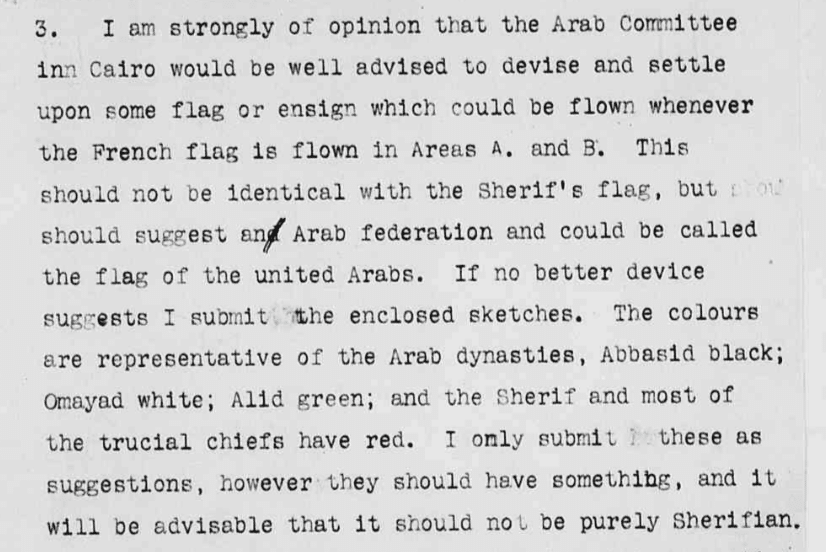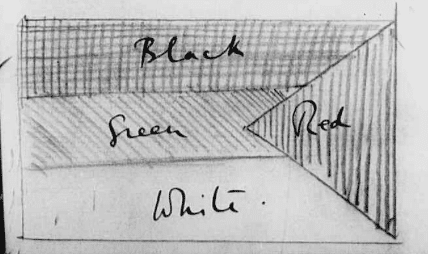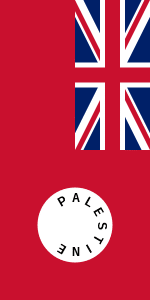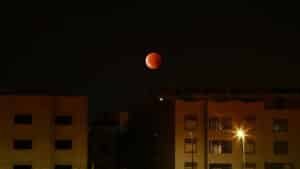The design of the Palestinian flag tells the tale of an interesting journey. The whole Middle East has been passed from pillar to post throughout history, with different powers having sway over the entire area at different times, and the Palestinian flag encapsulates much of its history.
Map historian, Carmem Marques Rodrigues, gives us the story behind the Palestinian flag we see today:
“This iconic symbol was actually designed in England, thanks to the influence of British diplomat Mark Sykes during the period of the Arab Revolt from 1916 to 1918. The Arab Revolt, a significant movement in the fight for Arab independence, had the support of Britain in its struggle against the Ottoman Empire.”1
The four colors of the Arab world
 Sykes sent the design in a letter2 to Sir Reginald Wingate in 1917, who was then High Commissioner for Egypt. Wingate was similarly engaged in encouraging Saudi Arabia to also rise up against the Turkish empire at the time. The British were fighting against the Turks in the early twentieth century, and were seeking to bring an end to the Ottoman empire that had controlled the whole region for some 400 years.
Sykes sent the design in a letter2 to Sir Reginald Wingate in 1917, who was then High Commissioner for Egypt. Wingate was similarly engaged in encouraging Saudi Arabia to also rise up against the Turkish empire at the time. The British were fighting against the Turks in the early twentieth century, and were seeking to bring an end to the Ottoman empire that had controlled the whole region for some 400 years.
Sykes and Wingate wanted to support the separate ethnic groups in the Middle East that had been swept up into one caliphate, under the rule of the Ottoman Turks, and encouraged them to fight for their own sovereignty. It was towards this end that Mark Sykes, a representative of the British Crown, created the familiar design based on four colors: Black, white, green and red. The four colors were symbolic, representing the four major Arab royal dynasties:
– Black represented the Abbasids (750–1517 AD)
– White the Umayyads (661–750 AD)
– Green the Fatimids (909–1171 AD)
– Red the Hashemites (1916-present)
Christopher Eames writes in the Armstrong Institute of Biblical Archaeology that the choice of these four colors is was a “nod” to the 13th-century Arab poet Safi al-Din al-Hili, who wrote: “White are our deeds, black are our battles, green are our fields, red are our swords.”3

According to Eames, “Black is the color of revenge, from pre-Islamic time, and the Abbasid color of mourning; white was used by the Abbasid-opposed Umayyads as their symbol of mourning, and also symbolized the Prophet Mohammed’s first battle of Badr; the Fatimid green symbolized allegiance to the prophet’s cousin Ali, who famously wrapped himself in green to prevent an assassination attempt against the Prophet Muhammad; the red symbolizes the bloody struggle for freedom.” It’s also been pointed out that these four colors are also the colors mentioned in Revelation chapter 6, describing the four horsemen of the apocalypse!
Rodrigues explains, “The red triangle at the center of the flag is not just an aesthetic choice but symbolizes Hashemite leadership during the Arab Revolt, unifying the other pan-Arab colors”.
In short, the Palestinian flag was designed by a British guy in order to inspire the pan-Arab revolt against Ottoman Empire.
As Rabbi Jonathan Sacks of blessed memory pointed out, the mandatory era in which the Balfour Declaration was made was anti-colonialist, in that it was seeking to parcel back land to its original owners. Speaking of the Declaration itself, he said,
“It was an anti-imperialist gesture, after centuries of Christian and Muslim imperialism with no autonomous states, they attempted to return Ottoman ruled lands to the tribes that lived in them. Lloyd George was seeking more justice and wanting an end of the days of Empire, to return the lands to their original inhabitants.”4
Ironically, Sykes was also a Zionist and a key player in the Balfour Declaration, which paved the way for the reestablishment of Israel. The flag design was also submitted by Sykes to the Sharifian Caliph, Emir of Mecca and “King of the Arabs” Hussein bin Ali, encouraging unification the Arab world for the purpose of overthrowing the Turks. At that time, the land we know as Israel (or Palestine, depending on who you’re talking to) was known as “Ottoman Syria”.
The pan-Arab movement and the origin of the four caliphates
Just as Jewish people have a wide variety of cultural roots but ultimately trace their origins to Judea, Arabs may have ancestral heritage and come with a variety of different traditions, but they all have their origins in the Arabian Peninsula.
– The Abbasid caliphate descended from Mohammed from Saudi Arabia.
– The Umayyad family originally came from Mecca, in Saudi Arabia.
– The Fatimids were from North Africa, and the name comes from one of the daughters of Mohammed, Fatima, from Saudi Arabia.
– The Hashemites are direct descendants of Mohammed, and trace their origins to Mecca and Medina, in Saudi Arabia.
All of these dynasties and caliphates originated in Saudi Arabia, but then again it’s not altogether surprising that a pan-Arab movement would come from Arabia. When Islam arose in the seventh century, it subjugated nations throughout the Middle East and North Africa, conquering indigenous peoples like the Assyrians, Arameans, Christian populations like the Egyptian Copts, Jews remaining in the Holy Land, and all those living in the Levant area. They imposed the Arabic language throughout the region, and the Islamic lifestyle gradually became synonymous with Middle Eastern culture.
The flag of Saudi Arabia is noticeably different from other flags of the region, being only green in color and bearing Arabic script and a sword in white. The script reads, “There is no god but Allah; Muhammad is the Messenger of Allah”, with the sword of conquest underneath. The text is known as the “shahada” which means “testimony” or “declaration”.
The evolution of the Palestinian flag
 Before the overthrow of the Ottoman Empire, the flag that flew over the land known as Palestine was the Turkish moon and crescent. After the Turks were defeated by Britain and their allies in 1917, you might be surprised to hear that during the British Mandate that followed, there was a Palestinian flag design that was blue and white with a yellow Star of David in the middle! (See image: right hand page, third row.) However, this was never the official flag and was created by a Zionist group active at the time.
Before the overthrow of the Ottoman Empire, the flag that flew over the land known as Palestine was the Turkish moon and crescent. After the Turks were defeated by Britain and their allies in 1917, you might be surprised to hear that during the British Mandate that followed, there was a Palestinian flag design that was blue and white with a yellow Star of David in the middle! (See image: right hand page, third row.) However, this was never the official flag and was created by a Zionist group active at the time.
 Until 1948, the official Palestinian flag design had a red background with the Union Jack in the top left, with a white disc bearing the word “Palestine” on the right. The original area of Mandatory Palestine once included all of Jordan and part of Syria, and the British decided to allot one side of the Jordan River to the Arab speaking residents (the larger of the two areas, comprising Jordan and Syria) and make room on the other side to set up a Jewish homeland, in the area between the Jordan River the Mediterranean Sea (the land of River-to-Sea fame).
Until 1948, the official Palestinian flag design had a red background with the Union Jack in the top left, with a white disc bearing the word “Palestine” on the right. The original area of Mandatory Palestine once included all of Jordan and part of Syria, and the British decided to allot one side of the Jordan River to the Arab speaking residents (the larger of the two areas, comprising Jordan and Syria) and make room on the other side to set up a Jewish homeland, in the area between the Jordan River the Mediterranean Sea (the land of River-to-Sea fame).
In the end that smaller area was divided further into two by the UN in the 1947 Partition Plan, but as we know, in 1948 the surrounding Arab nations attacked in efforts to prevent the Jewish state from being established. Or, more accurately, re-established. The new state of Israel soon adopted the blue and white flag design of a prayer shawl with a Star of David in the middle—a design which quickly became globally recognized, for some with love, others indifference, and yet others with hatred.
The design of the Palestinian flag as we see it today was ultimately adopted on May 28, 1964, by the Palestine Liberation Organization (PLO) which is dedicated to the “liberation of Palestine” through armed struggle. In 1987 the PLO was declared a terrorist organization by the U.S but one year later Yasser Arafat declared the “State of Palestine” in 1988, and the design which started its journey on a piece of paper drawn by Mark Sykes was chosen to be their official Palestinian flag.
- Carmem Marques Rodrigues, GEOPAM Researcher and history book cartographer, The Surprising Origin of the Palestinian Flag: A Story of British Influence, October 19, 2023
- Letter from Mark Sykes (of Sykes-Pecot) to Reginald Wingate, February 22nd, 1917, showing his own sketches for the flag of the united Arabs (Arab revolt against Ottoman Turks) in WW1 (see: #3 p.59). Ref: FO882/16, https://discovery.nationalarchives.gov.uk/details/r/C1906448
- https://armstronginstitute.org/965-a-tale-of-two-flags
- Reflections on Balfour 100 from Rabbi Sacks
Picture by Ahmed Abu Hameda on Unsplash
















